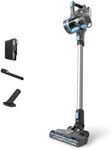Buying Guide for the Best Budget Cordless Vacuum
When choosing a cordless vacuum, it's important to consider your specific cleaning needs and the features that will best suit your lifestyle. Cordless vacuums offer the convenience of mobility without the hassle of a power cord, making them ideal for quick clean-ups and reaching difficult areas. However, they can vary significantly in terms of power, battery life, and additional features. Understanding these key specifications will help you make an informed decision and find a vacuum that fits your cleaning routine perfectly.Battery LifeBattery life refers to how long the vacuum can operate on a single charge. This is crucial because it determines how much cleaning you can do before needing to recharge. Battery life can range from 15 minutes to over an hour. If you have a larger home or plan to use the vacuum for extended cleaning sessions, look for models with longer battery life. For smaller spaces or quick clean-ups, a shorter battery life may suffice. Consider your cleaning habits and the size of your home when evaluating battery life.
Suction PowerSuction power indicates how effectively the vacuum can pick up dirt and debris. It's an important factor because stronger suction means better cleaning performance, especially on carpets and rugs. Suction power is often measured in air watts (AW) or volts. Higher numbers generally mean more powerful suction. If you have pets, thick carpets, or a lot of debris to clean, opt for a vacuum with higher suction power. For hard floors or light cleaning, moderate suction power may be adequate.
Weight and PortabilityThe weight of a cordless vacuum affects how easy it is to maneuver and carry around. Lightweight models are easier to use, especially for extended periods or when cleaning stairs and high places. Cordless vacuums typically weigh between 3 to 8 pounds. If you need a vacuum that's easy to carry and store, look for a lighter model. However, keep in mind that very lightweight models might compromise on battery life or suction power.
Dustbin CapacityDustbin capacity refers to how much dirt and debris the vacuum can hold before needing to be emptied. This is important for convenience, as a larger dustbin means less frequent emptying. Capacities can range from 0.3 liters to over 1 liter. If you have a large area to clean or prefer not to empty the bin frequently, choose a vacuum with a larger dustbin. For smaller spaces or if you don't mind emptying the bin often, a smaller capacity might be sufficient.
Attachments and AccessoriesAttachments and accessories enhance the versatility of a cordless vacuum by allowing you to clean different surfaces and hard-to-reach areas. Common attachments include crevice tools, dusting brushes, and motorized pet tools. These are important if you have specific cleaning needs, such as pet hair removal or cleaning upholstery. Consider what areas you need to clean and choose a vacuum with the appropriate attachments to meet those needs.
Filtration SystemThe filtration system in a vacuum is responsible for trapping dust and allergens, which is crucial for maintaining air quality in your home. High-efficiency particulate air (HEPA) filters are the gold standard, capturing 99.97% of particles. If you or your family members have allergies or asthma, a vacuum with a HEPA filter is recommended. For general cleaning, a standard filter may be sufficient, but ensure it is easy to clean or replace.

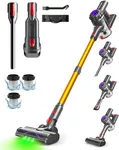


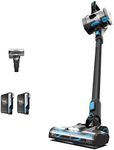

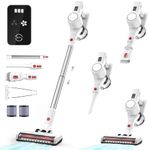
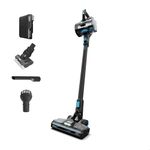



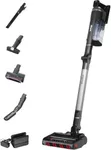
![Hoover HF1 Plus Pet Flexi Cordless Stick Vacuum Cleaner with Flexi Tube, Pet Hair Tool, Turbo Suction Mode, Up to 45min Runtime, LED Lights, Multi-Floor Nozzle, Handheld Capability, 165w [HF1PZ10PX]](https://images-proxy.bestreviews.guide/iONRYWNxHq3VqJK3E8zknlBWfOM=/0x150/https://m.media-amazon.com/images/I/412krr3XRDL._AC_CX679_.jpg)
![Hoover HF6 Cordless Stick Vacuum Cleaner, Floor Sensor, Dual Way Clean, Up to 100 Min Runtime, Anti Hair Wrap, Double Edge Cleaning, Versatile, QuickPark, Portable, 660w [HF610H]](https://images-proxy.bestreviews.guide/QXyv3whIKrS2qIToJGUTyIB7MPA=/0x150/https://m.media-amazon.com/images/I/41N6y2SnWyL._AC_CX679_.jpg)
![Hoover HF1 Plus Pet Cordless Stick Vacuum Cleaner with Anti Hair Wrap, Turbo Suction Mode, Up to 45min Runtime, with Motorised Pet Tool, Multi-Floor Nozzle and Crevice Tool [HF1P10P]](https://images-proxy.bestreviews.guide/frZyyP7vNMSO5Bz0gjSEosKnZXc=/0x150/https://m.media-amazon.com/images/I/41dESRmETAL._AC_CX679_.jpg)
